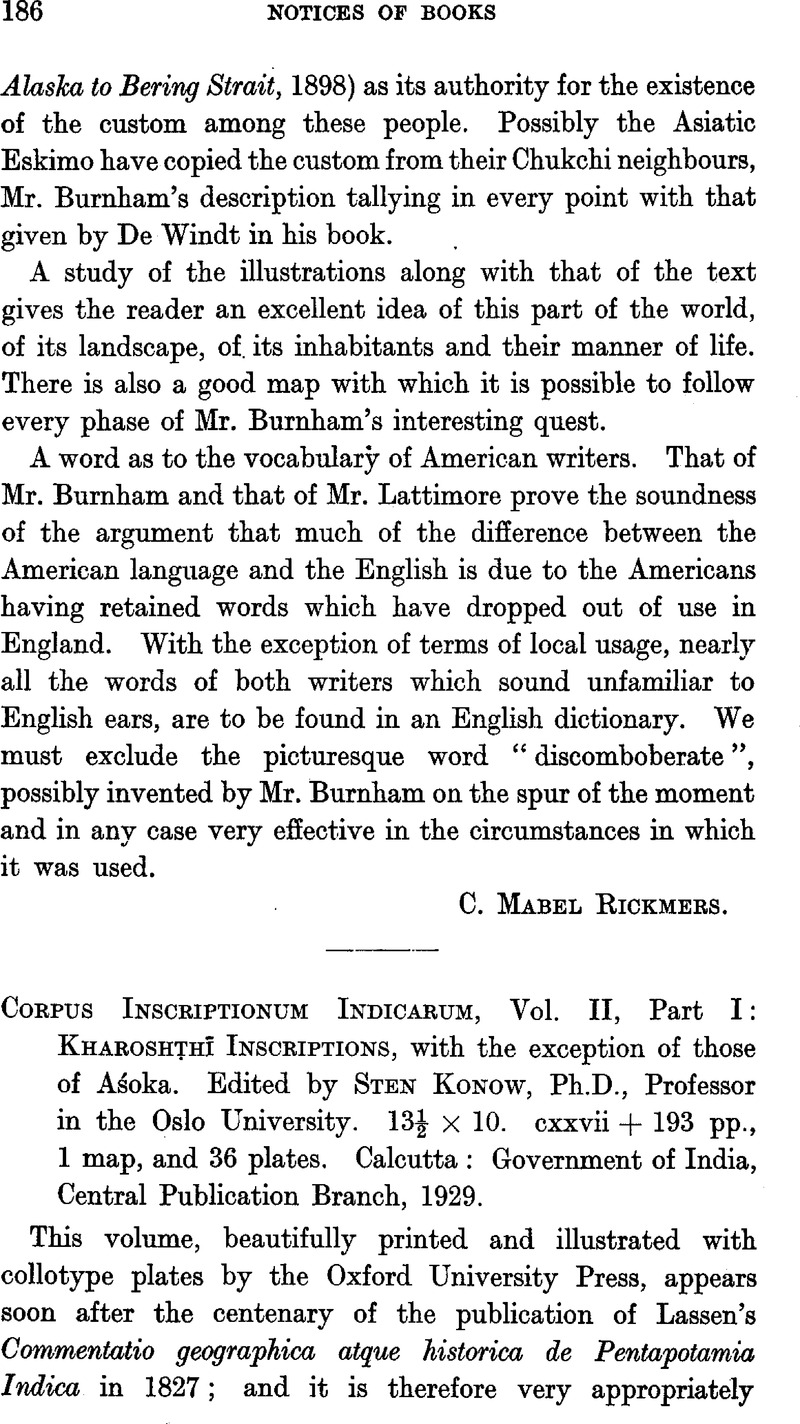No CrossRef data available.
Published online by Cambridge University Press: 15 March 2011

page 194 note 1 In support of his opinion Professor Konow quotes ProfessorThomas, and the authorities to whom he refers in JRAS. 1906, p. 208Google Scholar; but see Whitehead, , Cat. Lahore Mus., vol. i, Indo-Greek Coins, p. 132, note 1Google Scholar: “In connexion with the joint coinage of Azes and Azilises, I may mention the theory of Hoffmann, G., Auszüge aus syrischen Akten persischer Mürtyrer, Leipzig, 1880, p. 142Google Scholar—that the names are the same, one being a contraction of the other. He apparently was led to this erroneous conclusion because he did not recognize the existence of what is really a joint type. Such types are well known in the Indo-Greek series, e.g. joint types of Lysias and Antialkidas, of Vonones and his relatives, and of Spaliriśes and Azes.”
page 194 note 2 See the observations of Dr. Vincent Smith quoted by Professor Konow on pp. xxxix, xl.
page 195 note 1 Pargiter, , Dynasties of the Kali Age, pp. 45–6Google Scholar.
page 196 note 1 Rapson, , The date of the Āmohinī votive tablet of Mathurā, in “Indian Studies in honour of Charles Rockwell Lanman”, Harvard University Press, 1929Google Scholar.
page 197 note 1 See “Summary of Numismatic Evidence” in Camb. Hist. Ind., i, pp. 586 ff.
page 202 note 1 Rapson, B.M. Cat., Coins of the Andhra Dynasty, etc., pp. cviii, cxiiGoogle Scholar.